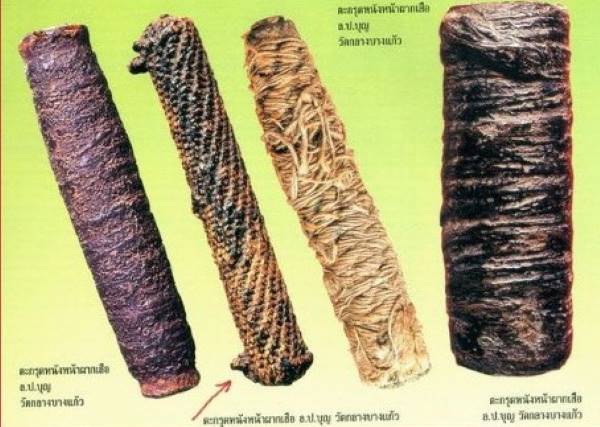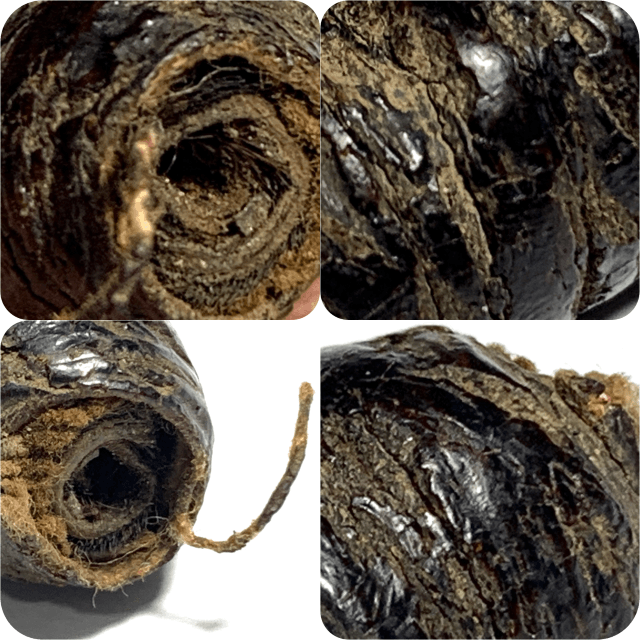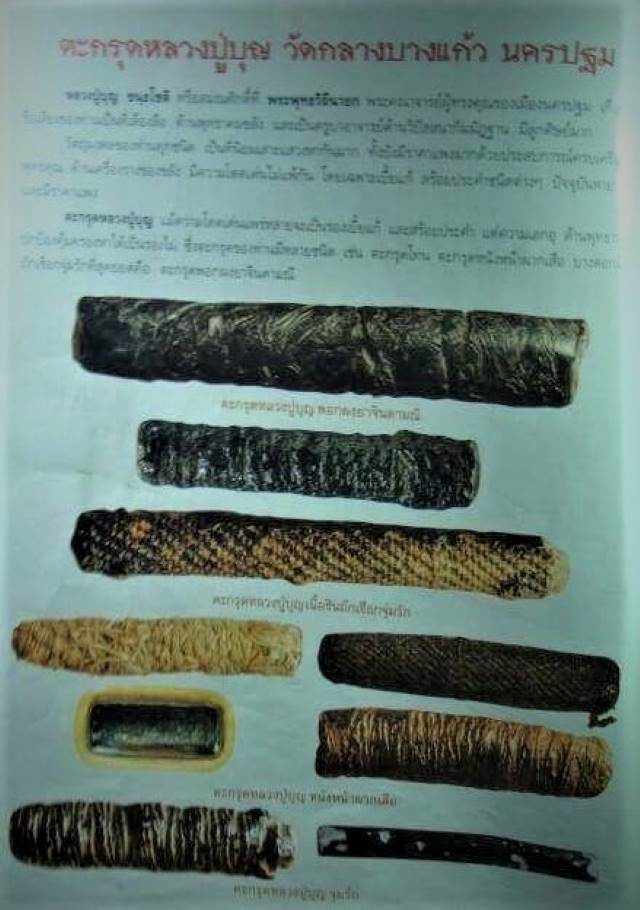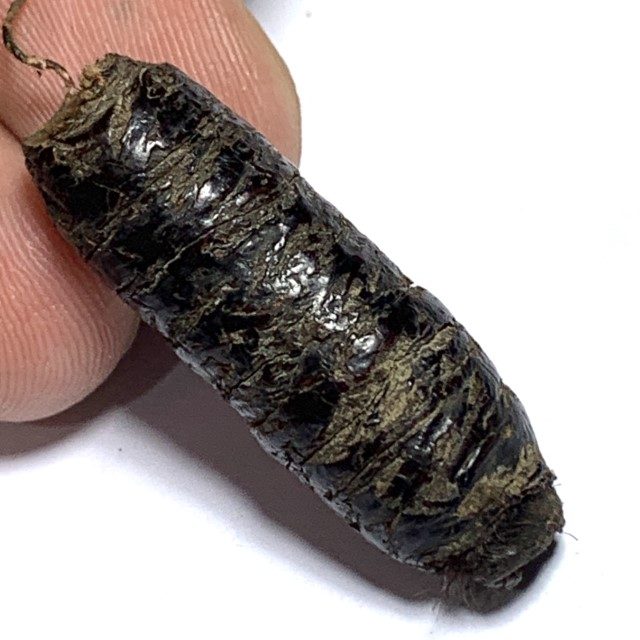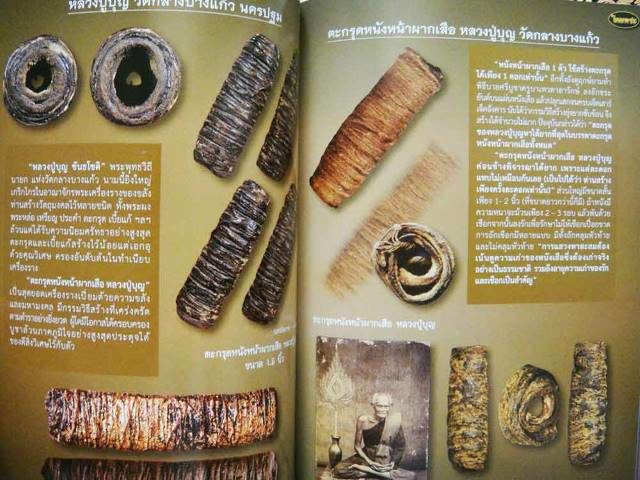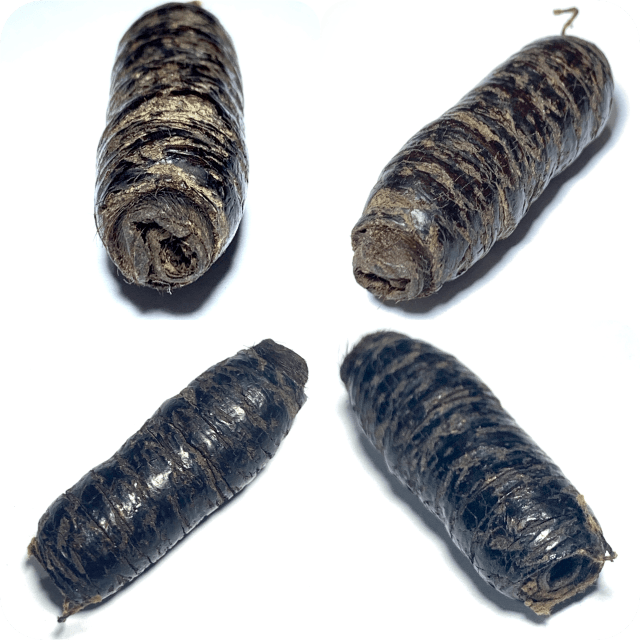Pra Pid Ta Maekasit Hlang Hua Jai Pra Bpathamang – Luang Phu Bun Wat Klang Bang Gaew
An extremely rare Pra Pid Ta amulet of Luang Phu Bun, the Pra Pid Ta Hlang Tant Tu Sa Ma Ni, of Luang Phu Bun, of Wat Klang Bang Gaew. The Yant on rear face can be seen in the famous Pra Gleep Bua amulets of LP Bun, which were discovered some decades ago and found to be documented by the temple.
Below Exhibit – Pra Pid Ta Hlang Yant Tu Sa Ma Ni Nuea Maekasit See Tong Pla Hlai
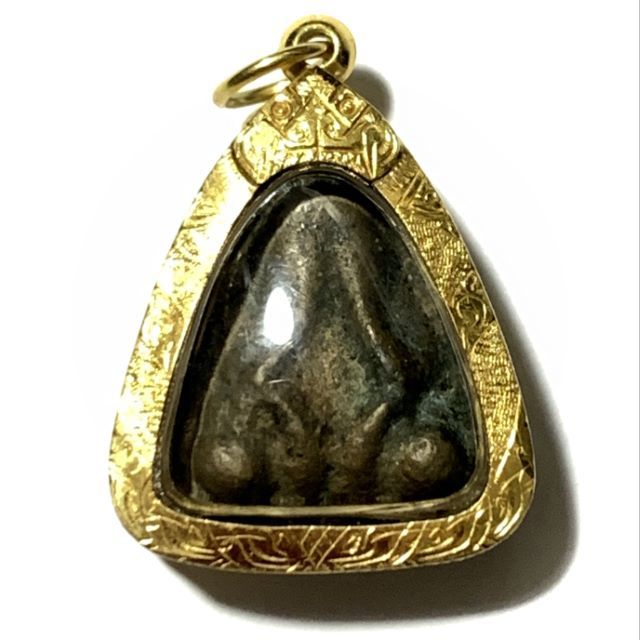
Not all models of metallurgical amulets are fully documented, but from what information is accumulated to date, it is known that Luang Phu Bun made Pra Pid Ta, and Pra Pim Samadhi Gleep Bua meditating Buddha amulets in Maekasit metals, and in more rare and fewer numbers, also in other metallurgical alchemical alloys. The Pra Pid Ta is rarer than the Pra Pim Gleep Bua, which were primarily all made from Maekasit, whereas the Pid Ta is also found in Lor Boran forged alchemical bronze alloy.
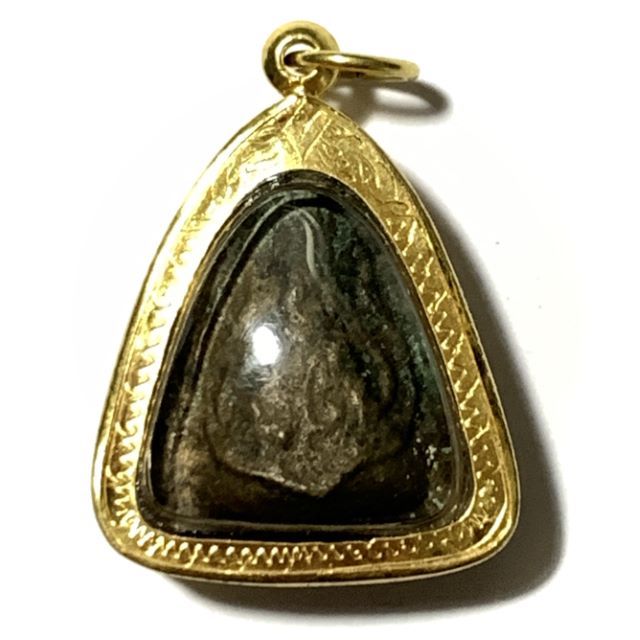
The rear faces of these amulets are found to have a number of different designs on the rear face, and in the case of the Pim Gleep Bua lotus-petal shaped Maekasit versions, 7 different models are documented (which does not mean that there are no other models made, rather, that documentation is a continuous voyage of discovery, but by no means the be-and-end-all of a pantheon of amulets.
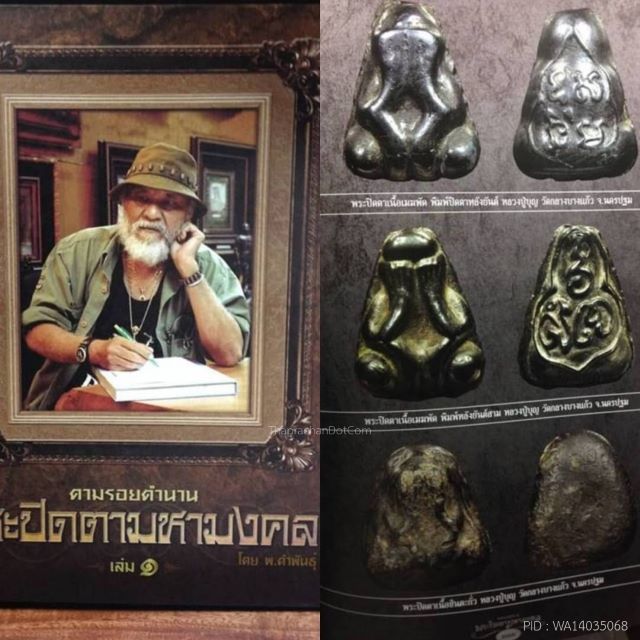
The Pid Ta Lor Boran and Gleep Bua Maekasit amulets were never released in any official edition, rather mostly handed out by Luang Phu Bun to his devotees himself, when they would come to pay respects and make merits. The documentation to date is constructed mostly from devotees who received amulets in their hand from LP Bun himself, and showed their amulets, but it coud be, that there are much more than the officially discovered, known and documented 7 Pim.
Below; A decades old publication showing various Pra Pid Ta of Luang Phu Bun
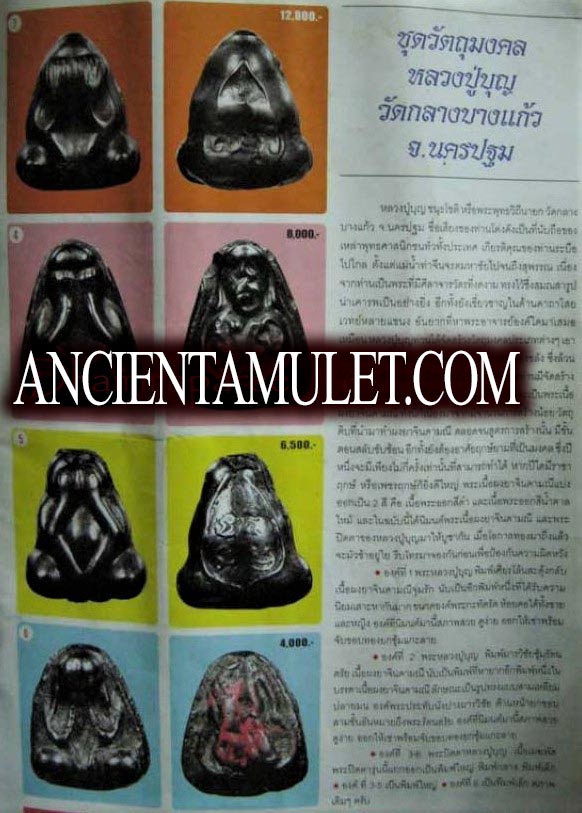
In fact, with olden days masters, one can almost always assume, that not all of their amulets were documented, as in ancient times, there was much less attention to documenting the amulets of every monk in every year of their lives. This is also why those authors who study and uncover new information, and publish that which is known are important contributors to the preservation of knowledge about Thai Buddhist Amulets and their Makers.
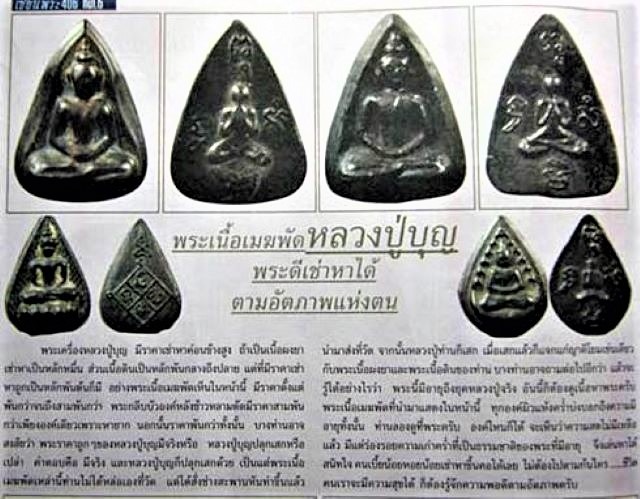
The Pra Pid Ta Khao Buang has many different appearances due to the olden days fcasting methods, and is still not fully documented as a pantheon. Not all models have yet been identified. However, for now, we can name and define at least seven models of Pim Pid Ta and Pra Gleep Bua.
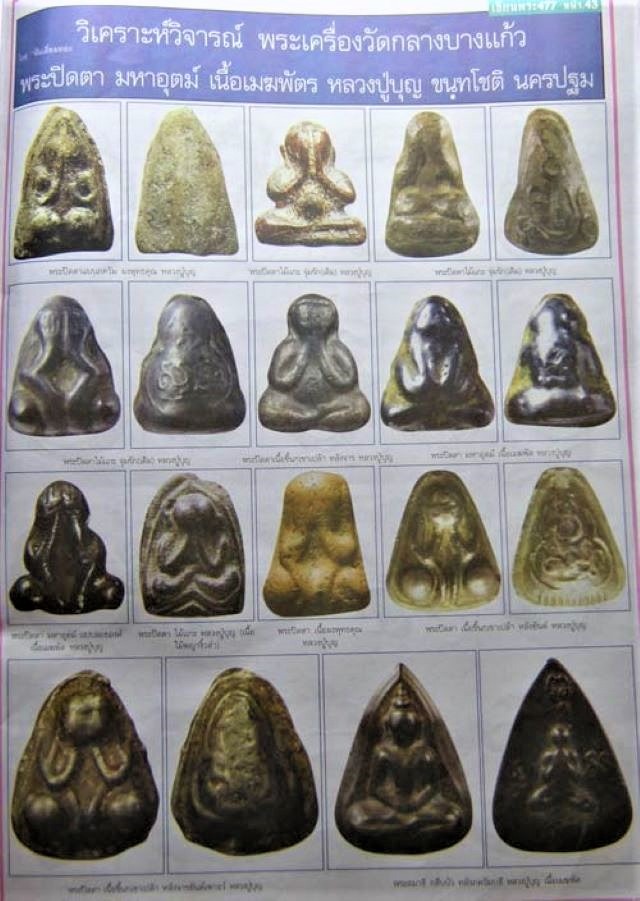
Luang Phu Bun is said to have been a close accomplice, and often mutually visited with the Great Luang Phu Nak of Wat Huay Jorakhae, in Nakorn Pathom. LP Bun received the methodology and mastery of the Wicha Maekasit from LP Nak, which is the ancient science of Alchemical Metallurgy from the Dtamra Saiyawaet, used for casting powerful metallic magical amulets. For this reason, the majority of Luang Phu Bun’s Maekasit amulets have a dark black sheen to them, similar to Luang Phu Nak’s Maekasit. But in some very few exhibits one can see the see tong pla hlai greenish-golden sheen which is often also seen in the amulets of Luang Por Tap, of Wat Anongkaram in Nontaburi.
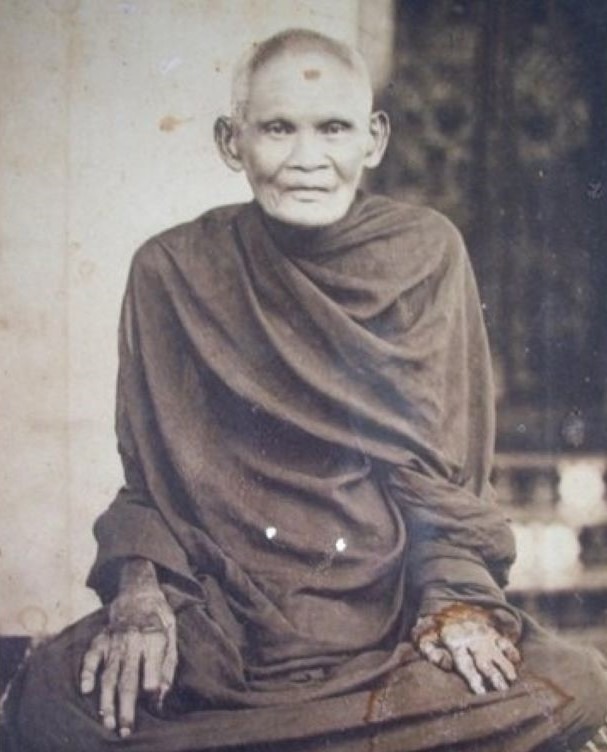
The seven major documented Pim are as follows; 1. Pra Pid Ta Maha Ud Hlang Agkhara Tu Sa Ma Ni (Hua Jai Pra Bpathamang***), 2. Pra Pid Ta Maha Ud Hlang Yant Dto, 3. Pra Pim Samadhi Gleep Bua Hlang Ppra Pid Ta, 4. Pra Pim Samadhi Gleep Bua Hlang Agkhara 4 Dtua (4 Khom Agkhara Syllables on rear face, seen to vary), 5. Pra Pim Samadhi Gleep Bua Sum Hlang Pra Pid Ta (Elongated pointed arch model), 6. Pra Pim Luang Por Dto Hlang Pra Pid Ta, and 7. Pra Pim Bua Met Hlang Yant Na Ma Pa Ta (with 4 Khom Pali Syllables on rear face NA MA PA TA representing the 4 Elements).
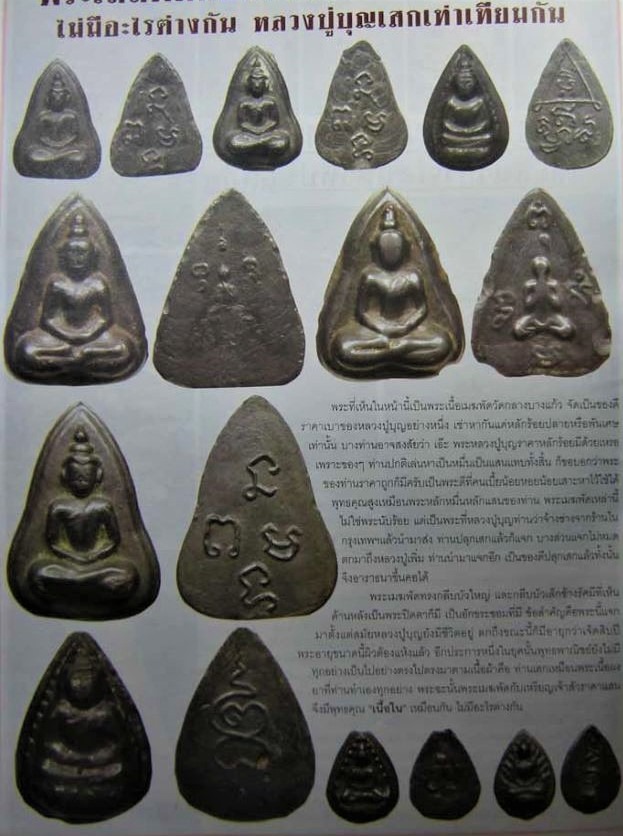
***Please note; The term ‘Hua Jai Pra Bpathamang, comes from the Dtamra Saiyawaet Magical Grimoires, but in Dhamma Sastra (Buddha Science), it has been falsely named by the amulet world as ‘Hua Jai Pra Bpathamang’ and lists the four syllables as ‘TU SA MA NI’ whereas if we list, the 4 Noble Truths in their proper order, and notice that ‘TU SA MA NI’, are the first syllables of each Pali Sanskrit word of the 4 Noble Truths (Hua Jai Pra Ariyasaj 4), then we can see that it should be ‘TU’ for ‘Tugkh; (Dhukkha – Suffering/Dissatisfactoriness), ‘SA’ for ‘Samutayaa’ (A Cause of Suffering/Dissatisfaction), then ‘NI’ for ‘Nirote’ (Nirodha – extinguishing of all external perceptions, and of Dhukkha/Dissatisfactoriness), and finally ‘MA” for ‘Maggha (The 8 Fold Path to the Cessation of all Suffering).
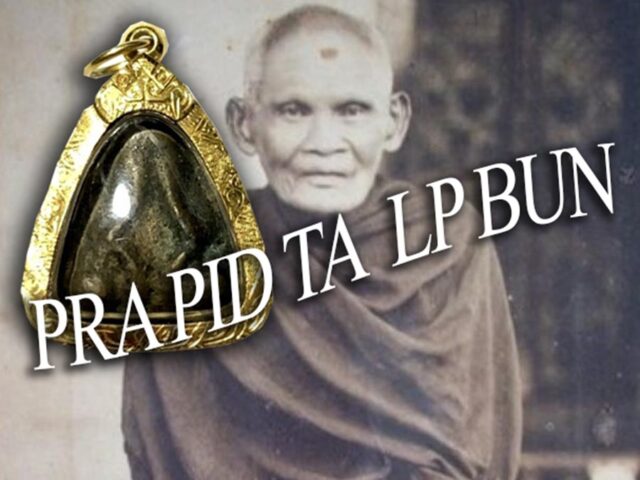
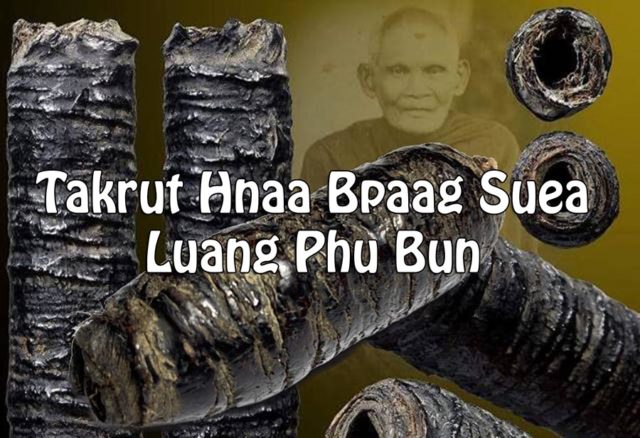
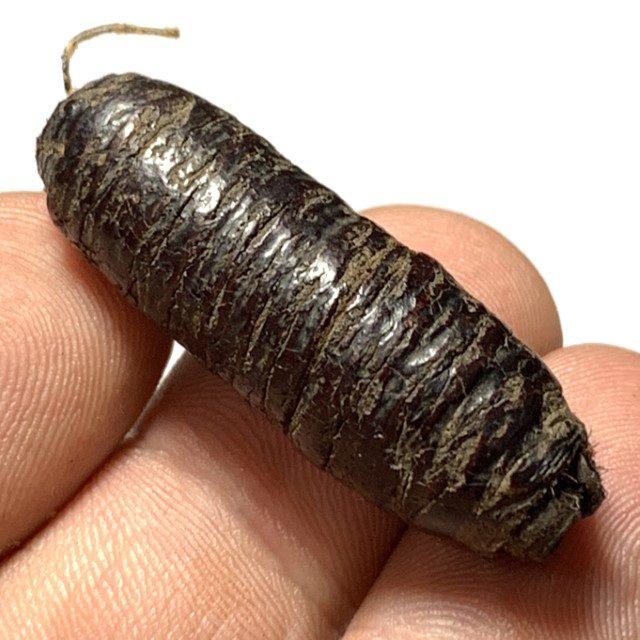
 Free EMS Express Airmail Registered Shipping Worldwide is included with this amulet. A Master Class amulet from the great Master of
Free EMS Express Airmail Registered Shipping Worldwide is included with this amulet. A Master Class amulet from the great Master of 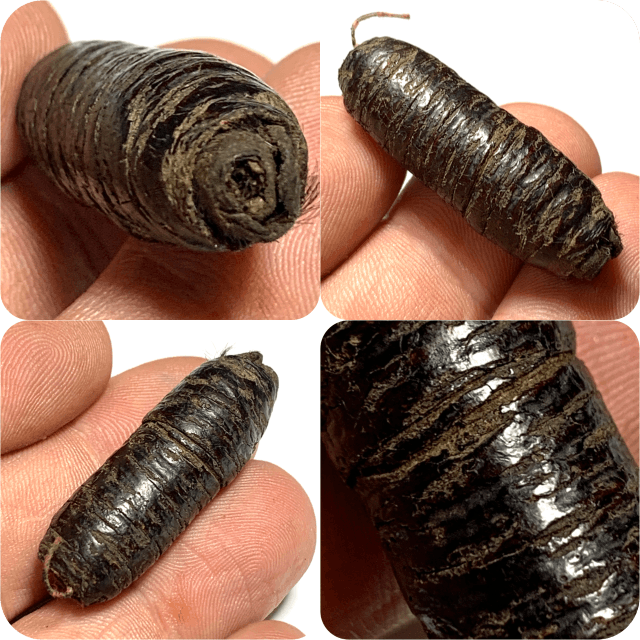
 A Centenarian Amulet of Immense Value for the Sacred Powerful Blessings of the Great LP Bun, its Historical Importance, and Rarity as an Ancient Amulet of Master-Class Status, as well as for being a masterpiece of antique magical heritage and Buddhist Historic importance, in a substance that is no longer to be found used in the making of modern amulets, due to the ban on ivory and tiger hide and teeth, which only permits antiques of ancient origins to continue to exist.
A Centenarian Amulet of Immense Value for the Sacred Powerful Blessings of the Great LP Bun, its Historical Importance, and Rarity as an Ancient Amulet of Master-Class Status, as well as for being a masterpiece of antique magical heritage and Buddhist Historic importance, in a substance that is no longer to be found used in the making of modern amulets, due to the ban on ivory and tiger hide and teeth, which only permits antiques of ancient origins to continue to exist.